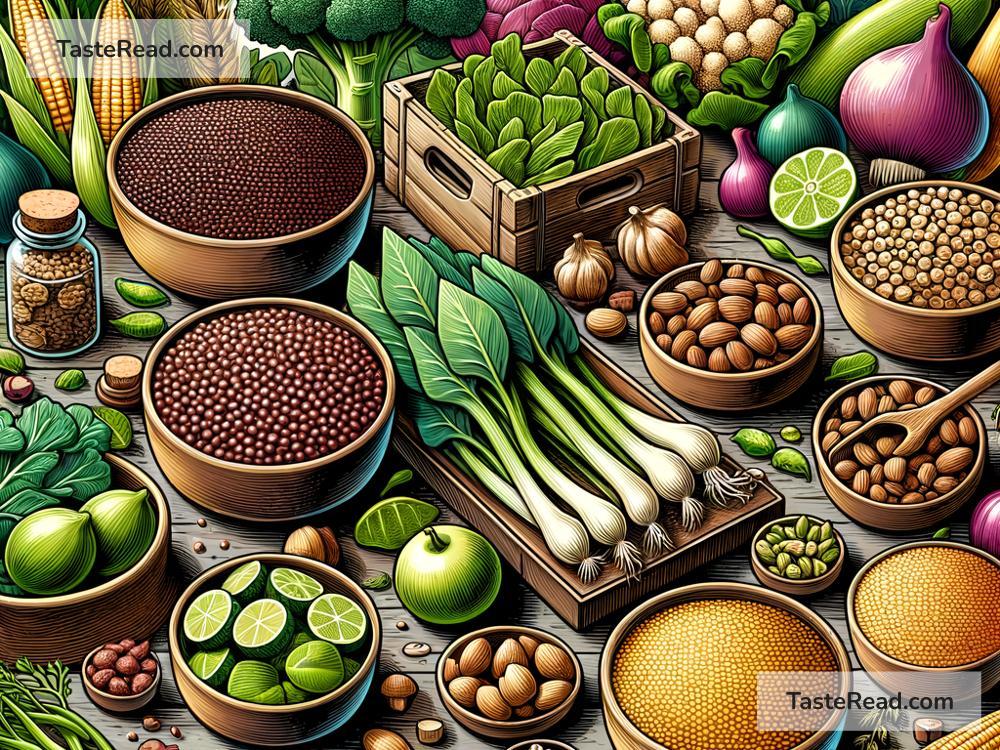Foods for Improving Climate Resilience: How Your Plate Can Help the Planet
Climate change is one of the biggest challenges facing our world today. Rising temperatures, unpredictable weather, droughts, floods, and other environmental changes are putting pressure on how we grow food and feed ourselves. But here’s some good news: the food we choose to eat can play a big role in building climate resilience. By picking sustainable, adaptable, and eco-friendly crops, we can help reduce the negative impacts of climate change and ensure healthier, more stable food systems for everyone.
In this blog, we’ll explore foods that support climate resilience, and how you can contribute to a greener future through your diet.
What Is Climate Resilience?
Before we dive into specific foods, let’s understand what climate resilience means. Climate resilience refers to the ability of ecosystems, communities, and systems—like agriculture—to adapt to or recover from the challenges caused by climate change. When crops and farming methods are designed to handle extreme weather conditions, they are more likely to thrive even in tough times. This, in turn, helps us maintain food security and protect the environment.
Foods That Build Climate Resilience
Some foods are better at thriving in changing conditions, require fewer resources, and have a smaller impact on the planet. Here are several examples:
1. Pulses (Beans, Lentils, Chickpeas, Peas)
Pulses, like lentils and chickpeas, are a fantastic source of nutrition, but they’re also champions of climate resilience. Here’s why:
– Low water use: Pulses need far less water to grow than other crops like rice or wheat. In a time when droughts are becoming more common, this is a major benefit.
– Improving soil health: Pulses help enrich the soil by adding nitrogen, which means farmers don’t need as many chemical fertilizers. Healthy soil can better withstand extreme weather.
By eating more pulses, you’re supporting crops that are sustainable and environmentally friendly.
2. Millet
Millet is an ancient grain that’s making a comeback—and for good reason! This hardy crop is highly adaptable to dry and hot climates, which makes it perfect for areas facing rising temperatures and less rainfall.
– Climate-friendly: Millet grows well even in poor soils and requires less water to flourish.
– Versatile: Millet can be used to make porridges, bread, and even gluten-free snacks. It’s a win for both the planet and your plate.
Adding millet to your diet is a simple way to support climate-adapted agriculture.
3. Seaweed
Seaweed might not sound like a staple food, but it’s quickly gaining popularity for its sustainability and resilience. This underwater crop grows without the need for freshwater, fertilizers, or land—making it an excellent choice for a world facing shrinking resources.
– Carbon absorber: Seaweed helps reduce carbon dioxide in the atmosphere, which can fight climate change.
– Fast-growing: Unlike many crops, seaweed grows quickly, which means farmers can harvest it several times a year.
Seaweed snacks, sushi wraps, or seaweed soups are all easy ways to add this nutritional powerhouse to your diet.
4. Quinoa
Quinoa isn’t just a trendy food—it’s also a climate hero. This supergrain, originally from South America, is highly resilient to extreme weather conditions like frost and drought.
– Resilient: Quinoa grows well in harsh climates, from high altitudes to low rainfall areas.
– Nutrient-rich: It’s packed with protein, fiber, and essential vitamins, providing more nutrition per bite.
Choosing quinoa as an alternative to less adaptable grains, like rice, supports climate-smart farming practices.
5. Indigenous Crops
Many local and indigenous crops have been growing for generations in areas with tough climates. These crops—like cassava, teff, amaranth, and sorghum—are naturally suited to their environment and often require fewer resources to grow.
– Culturally significant: Supporting indigenous foods also strengthens local traditions and farming communities.
– Adaptable: These crops tend to be more resilient to pests, diseases, and changes in the climate.
By trying new indigenous crops in your meals, you’re not only exploring new flavors but also promoting biodiversity and sustainability.
How You Can Make a Difference
It’s not just farmers who can support climate resilience—every one of us can contribute by making thoughtful food choices. Here’s how:
1. Diversify your diet: Add climate-resilient foods like pulses, millet, quinoa, and seaweed to your meals. Variety helps reduce over-reliance on less sustainable crops like wheat and rice.
2. Support local farmers: Buy foods grown in your region to reduce the environmental impact of transportation and support sustainable farming practices.
3. Reduce food waste: Wasting less food means fewer resources are used unnecessarily. Even small changes, like saving leftovers, can make a big impact.
4. Eat less meat: Meat production uses more land and water than plant-based foods. Choosing plant-based alternatives helps conserve resources.
Final Thoughts
The choices we make at mealtime matter—not just for our own health, but for the planet’s well-being, too. Foods like pulses, millet, seaweed, quinoa, and indigenous crops represent a brighter future for agriculture in the face of climate change. By incorporating these resilient foods into your diet, you’re taking a small but important step toward protecting our planet.
Climate resilience starts with you—and it’s as simple as what you put on your plate. Let’s make every meal a chance to build a healthier, more sustainable world for generations to come.


